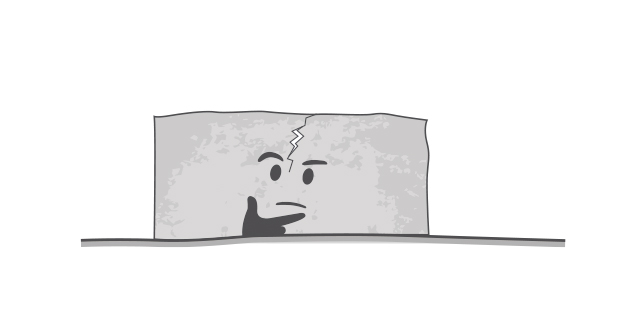Concrete is a beautiful thing. From roads to bridges to buildings to infrastructure projects in general, it is quite literally everywhere. And with massive construction booms in emerging economies like China, it doesn’t appear to be going anywhere anytime soon. With ever-growing demand, however, come new techniques to optimize the material to its fullest. Case in point: self-healing concrete. Just when you thought that healing was akin to life, innovation disrupts once again, this time in the form of a construction material that can repair itself. Now, can you imagine a world with smooth, crack-free roads? We don’t know about you, but that’s a world we’d like to live in. Join us as we have a look at the promising new process.
Cracking under stress: concrete as we know it
Unlike most building materials, concrete is not immune to wear and tear – or the aging process, if you will. Extreme cold and heat, along with a host of other factors, can wreak havoc on the material, causing it to crack and inevitably require repair. As a rule, one would normally go about the maintenance process in one of three ways: either patch the concrete, reinforce the concrete, or knock the concrete down and start from scratch. But that’s time-consuming, expensive and environmentally draining. What if, like the human body, concrete had the innate capacity to heal itself? It was precisely this query that sent microbiologist Hendrik Jonkers, from Delft University of Technology in the Netherlands, on a quest to uncover the healing potential of concrete.
Like healing bone, but for concrete
It is common knowledge that the human body can heal bone through mineralization. But can the same process really be applied to concrete? Jonkers and his team thought so, and thanks to their efforts, self-healing concrete is indeed a (beautiful) thing. How does it work, exactly? Jonkers’ technique involves embedding self-activating limestone-producing bacteria into the building material. Tasked with finding the right bacteria that could not only survive being mixed into concrete but also actively start a self-healing process, Jonkers stumbled upon Bacillus pseudofirmus or Sporosarcina pasteurii.
These bacteria are mixed and distributed evenly throughout the concrete. Once rainwater or moisture seeps into the cracks, the process is triggered, and the bacteria start to produce the limestone that will eventually repair the cracks. (Ironic enough: the very nemesis of concrete – water – is ultimately what triggers the healing response.) This process can be likened to that carried out by osteoblast cells in our body, which make bones.
What does the future hold for self-healing concrete?
The future looks bright for the new material. But don’t count on it curing any gaping potholes just yet – the technology is currently able to mend cracks up to 0.8 mm wide. That being said, Jonkers and his team have their sights set on infrastructure projects in developing countries, where they feel the new technology will help to reduce repair costs down the road.
Sources:
http://www.iflscience.com/chemistry/self-healing-concrete-repairs-its-own-cracks/
http://cen.acs.org/articles/94/i6/Helping-Concrete-Heal-Itself.html






